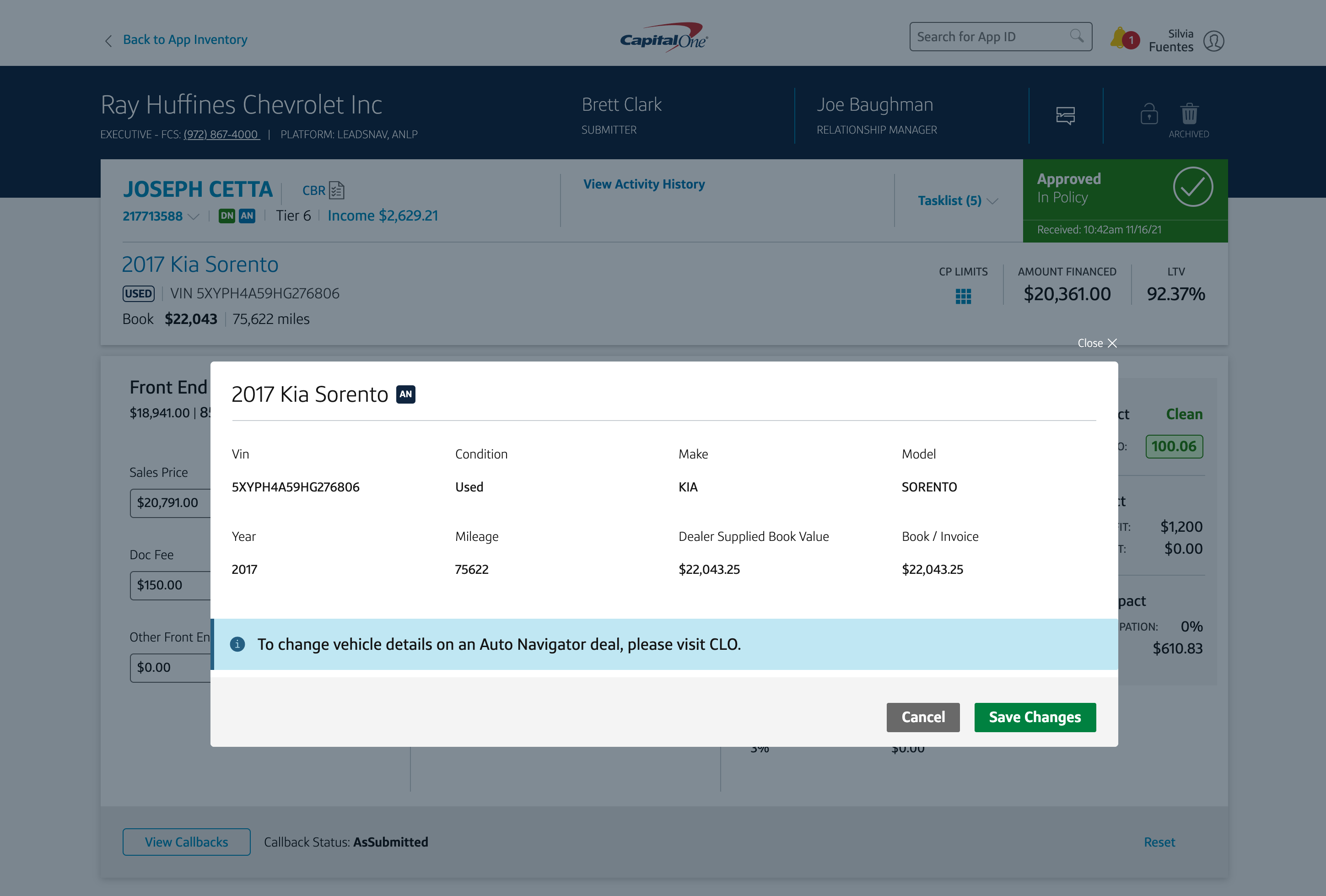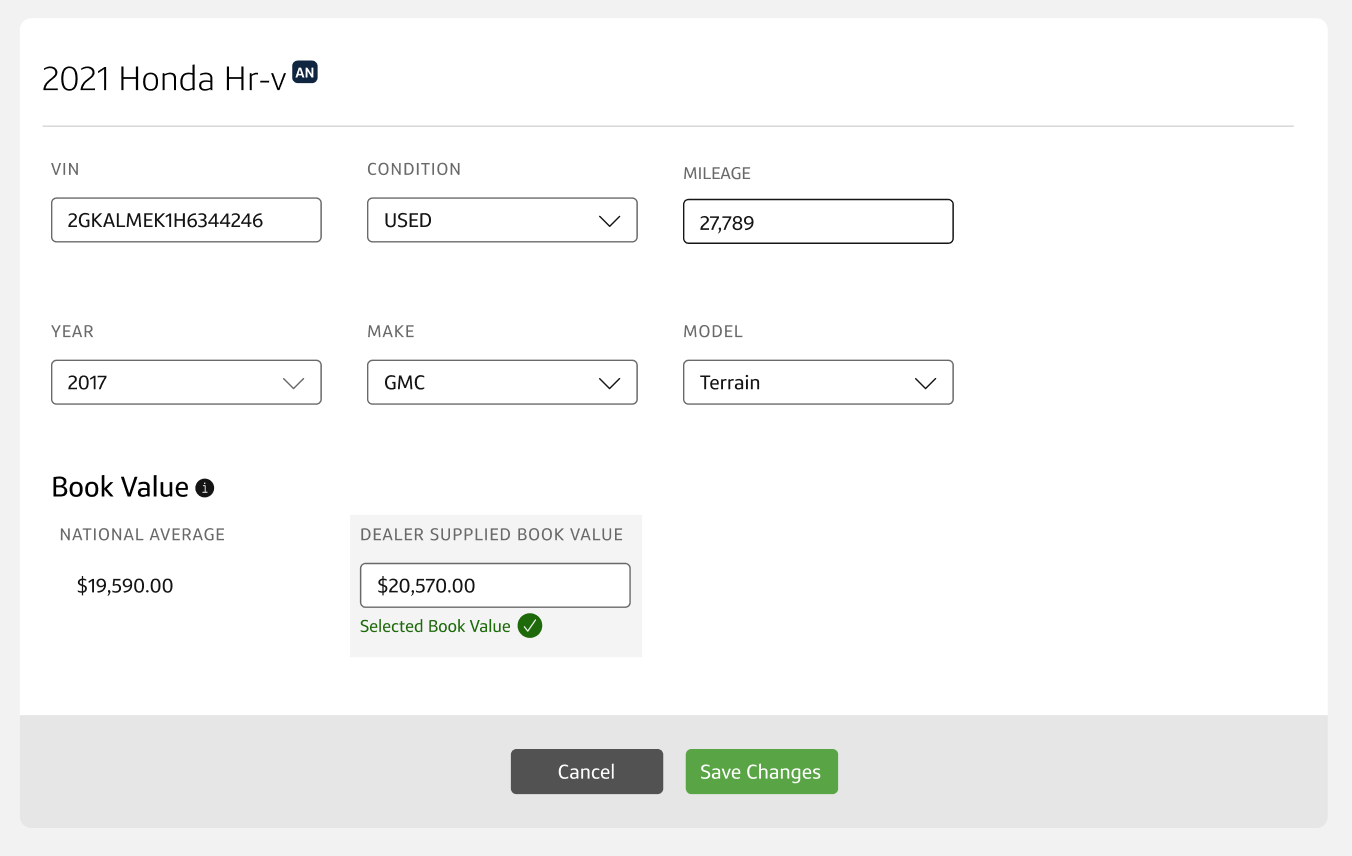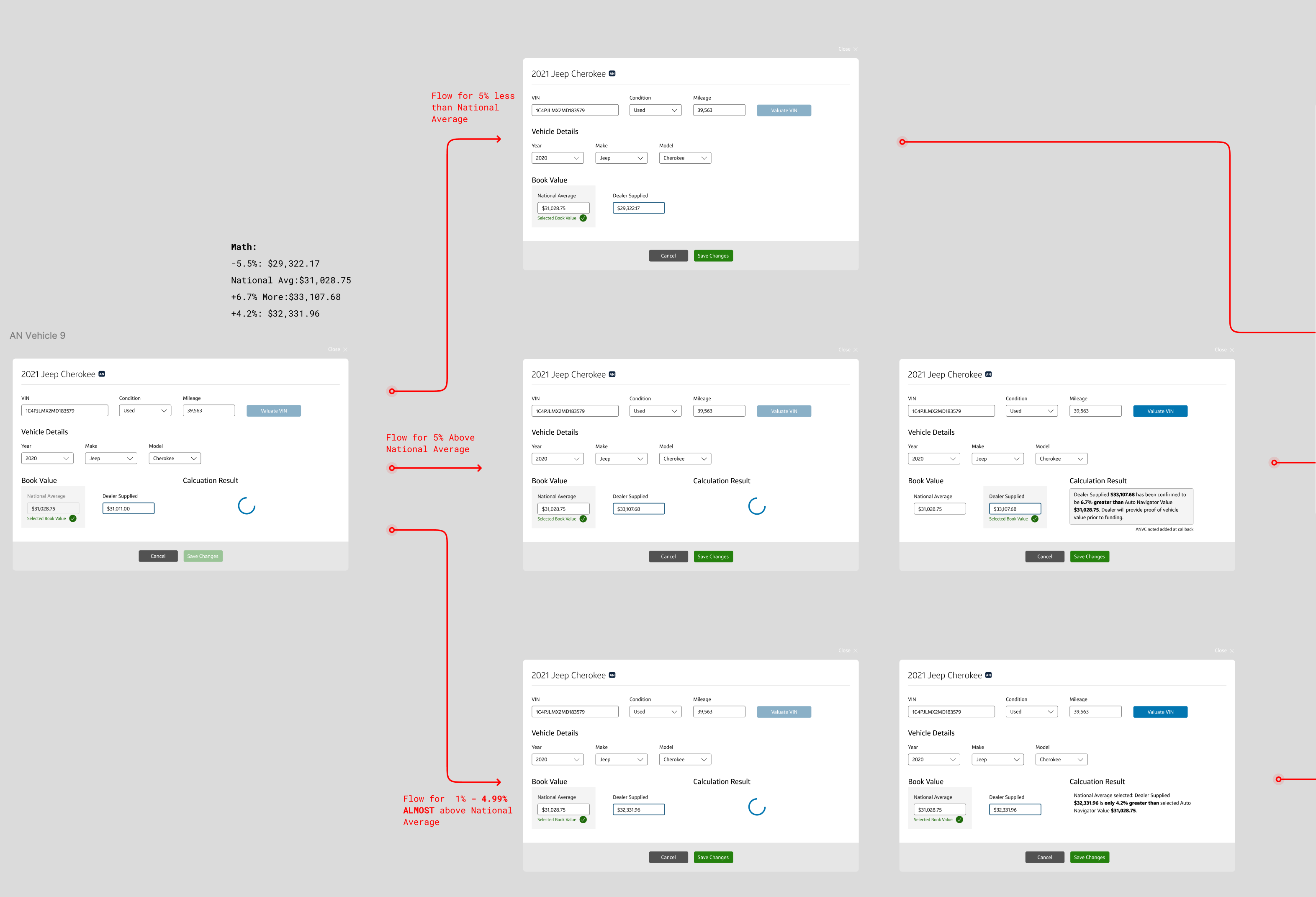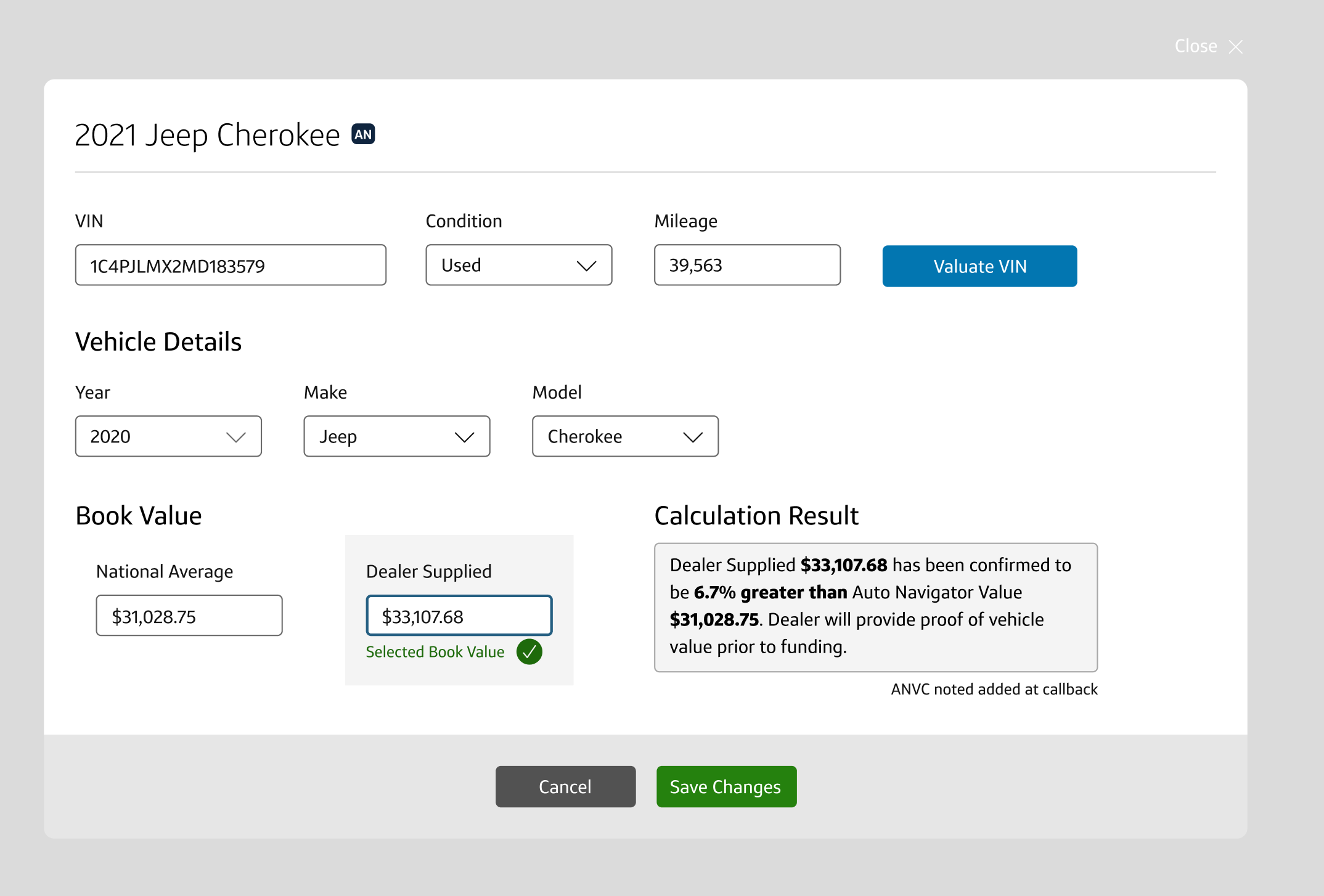Capital One - 2021
Vehicle Valuation Feature for Call Center Associates
Overview
During my first year at Capital One, I worked on our underwriting tool that served our associate underwriters. Coincidentally it was also the product's first year in production, serving over three hundred associates and growing.
Our team's focus in this project was building the valuating capabilities a soon-to-be decommissioned tool had into the MVP vehicle modal.
It was additionally vital from a business perspective to address the issue as research from our analysts showed that when our associates valuated a vehicle, it was more likely to end in Capital One winning a deal.
My Role
I worked on this project alongside my team, Roadrunner, a product manager, lead front-end engineer, and various back-end engineers. In addition, I periodically shared it with our larger design team for exploration and feedback.
The Process
Concepting & Research
I opted to use high-fidelity designs in Figma for this project because I was comfortable with the product and already had some ideas for solutions in my mind. I referenced archived concepts from a previous designer during my initial design process. I mocked up a version that improved on the initial concepts and the first iteration of price comparison.
We started research with a POC and got our prototype in front of three associates for a combined empathy interview and talk-aloud walk-through of the POC. This type of research was the best option for us as it saved time, allowed us to address the previous questions documentation didn't answer, and tested the idea that we came up with based on our current knowledge.
We learned that the current process to valuate a vehicle was a multi-page and time-consuming process with research. What made it time-consuming was a repetition of inputting a vehicle's sale details and communicating the change in value to the dealer. A change in value could result in a sales price changing and go one of three ways:
- vehicle sales price remains the same
- vehicle value increases but is below the national average threshold; sales price remains the same
- the vehicle value increases above a threshold; sales price increases
Iterations
Knowing the above, we worked with our engineering team on the feasibility of sending automated messages based on the valuation result, which included the new price, the old price, and the threshold percentage difference. We added a message preview into the design that would send when an associate pressed the update button.
Having all the core elements of the experience decided, I made about four design iterations that varied. We aimed for a version that communicated a comparison of the values occurring, and the results of that compassion would automatically go to the dealer. I got great feedback from my PdM partner on each iteration and was well challenged visually by our larger design team to push the design further on each iteration.
Our Solution
What went into testing was a version that valuated a vehicle with fewer clicks and streamlined communication back to the dealer for the associate. And a few minor UI updates I was able to sneak in.
The updated Vehicle Details now included:
- Change in the order of information in the existing UI that flowed better with the conversation associates were having on the phone
- Vehicle valuation feature(the primary goal) that would:
- On input, start a comparison between the two-vehicle values and displays a selected value
- Pre-populates one of three result messages that auto-populate the new and previous value and the percentage difference and send the message on the next turn.
Closing
In all, we merged the experience that spanned three separate pages(a new tool, an outdated tool, and a calculator excel formula) into one modal. This updated feature allowed them to achieve the valuation task with less time and fewer clicks and won associates more deals helped us decommission the old tool.
I was pleased to make our digital tools do the tedious administrative work for our associates to focus on doing their best, building relationships, and making deals.



